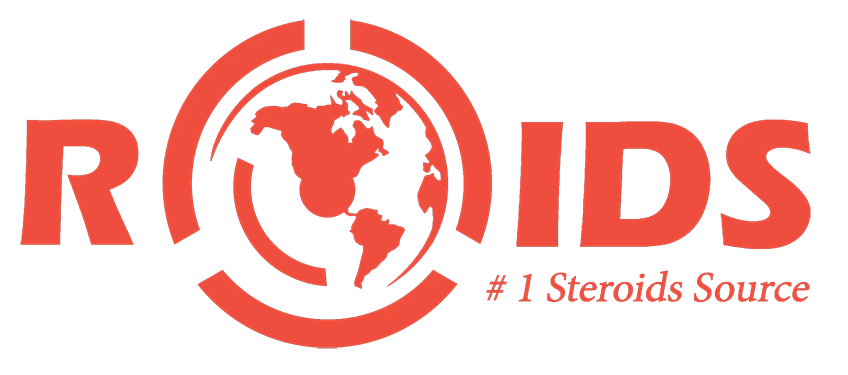Building Muscle Naturally: Alternatives to Steroids for Muscle Growth

Building Muscle Naturally: Alternatives to Steroids for Muscle Growth\
Introduction to Steroids and Muscle Growth
Steroids have long been associated with muscle growth and enhanced athletic performance. However, the use of steroids comes with significant risks and side effects that can have detrimental effects on your health. If you’re looking for a safer and more natural approach to building muscle, there are alternative methods available. In this blog post, we will explore the risks of using steroids, as well as provide you with effective alternatives for achieving your desired muscle growth naturally through diet and training.
Steroids, commonly known as performance-enhancing drugs, are synthetic substances that mimic the effects of natural hormones in the body. They can have significant impacts on muscle growth and development. While steroids may increase muscle mass by promoting protein synthesis and reducing muscle breakdown, they also come with potential side effects that should be carefully considered.
The use of steroids for muscle growth has been a topic of debate due to their potential negative effects on health. Steroids can lead to an imbalance in hormone levels and disrupt normal bodily functions. It is important to explore alternative methods for building muscle naturally without relying on these controversial substances.
What are Steroids?
Steroids are synthetic compounds that mimic the effects of natural hormones in the body. They can be categorized into two types: corticosteroids and anabolic steroids. Corticosteroids, such as prednisone, are commonly used for medical purposes to reduce inflammation and treat conditions like asthma. On the other hand, anabolic steroids, like testosterone and nandrolone, are often misused by athletes and bodybuilders to enhance muscle growth and performance.
Anabolic steroids, like testosterone and nandrolone, are often misused by athletes and bodybuilders to enhance muscle growth and performance. Among those seeking muscle gains, some commonly used steroids include Dianabol (methandrostenolone) and Deca-Durabolin (nandrolone decanoate). These substances promote protein synthesis within muscles, leading to increased size and strength. However, it is important to note that using these substances without proper medical supervision can have serious health consequences.
The legal status of steroids varies from country to country. While certain forms of steroid use may be allowed for specific medical conditions under prescription by a healthcare professional, non-medical use or distribution is generally illegal. It’s crucial for individuals considering steroid usage for muscle growth to understand both the potential benefits as well as the legal implications associated with their decision.
How Steroids Affect Muscle Growth
Mechanism of action: Steroids exert their effects on muscle growth by binding to specific receptors in the body, activating gene expression and increasing protein synthesis. This leads to an increase in muscle mass and strength.
Benefits and potential side effects: The use of steroids for muscle growth can result in rapid gains, increased endurance, and improved recovery time between workouts. However, it is important to note that these benefits come with potential risks such as liver damage, cardiovascular complications, hormonal imbalances, and psychological disturbances.
Long-term consequences: Prolonged steroid use can have serious long-term consequences on health. It may lead to stunted growth in adolescents, infertility in both men and women, decreased immune function, as well as an increased risk of certain cancers. Therefore, it is crucial to weigh the short-term benefits against these potentially life-altering effects before considering steroid use for muscle growth purposes.
The Risks and Side Effects of Steroids
Steroids, although popular for muscle growth, come with several risks and side effects. On the physical front, they can cause hormonal imbalances leading to acne breakouts and hair loss. Moreover, steroids may also impair liver function and increase the risk of cardiovascular diseases. When it comes to mental and emotional well-being, users might experience mood swings and aggressive behavior due to alterations in brain chemistry. In addition to these health concerns, it is important to consider the legal and ethical implications of steroid use as they are classified as controlled substances in many countries with potential legal consequences for their possession or distribution.
Physical Side Effects
Liver damage is a potential physical side effect of steroid use. It can lead to serious health complications and hinder the body’s ability to function properly. Other side effects include high blood pressure, which increases the risk of heart disease and stroke. Additionally, steroids can cause acne and various skin issues, impacting one’s physical appearance negatively.
- Liver damage
- High blood pressure
- Acne and skin issues
Mental and Emotional Side Effects
Mood swings are a common mental side effect of steroid use, causing abrupt and unpredictable changes in emotions. These rapid shifts can range from feeling euphoric and energetic to experiencing intense bouts of sadness or irritability. Additionally, aggression and irritability are frequently reported by individuals using steroids. This heightened aggression may manifest as increased confrontational behavior, impatience, or even hostility towards others. Furthermore, depression and anxiety can develop as a result of steroid use. Feelings of sadness, hopelessness, and constant worry can become overwhelming for users who struggle with these mental health conditions during their muscle-building journey without proper guidance and support mechanisms in place.
Legal and Ethical Considerations
When considering legal and ethical implications surrounding muscle growth, several key aspects must be addressed. Firstly, the illegal possession and distribution of steroids is a serious offense with potential legal consequences. In addition to this, maintaining fair play in sports competitions is crucial to ensure a level playing field for all athletes. Finally, organizations that promote drug-free policies uphold ethical standards by prioritizing the health and well-being of their members.
- Illegal possession and distribution of steroids
- Fair play in sports competitions
- Drug-free policies in certain organizations
Natural Alternatives to Steroids for Muscle Growth
Protein and amino acid supplements are effective natural alternatives to steroids for muscle growth. These supplements provide the building blocks your muscles need to repair and grow, without the potential side effects of steroids. They can be easily incorporated into your diet and workout routine for optimal results.
Another natural alternative to steroids for muscle growth is creatine. This compound helps replenish ATP stores in your muscles, allowing you to perform at higher intensities during workouts. By increasing strength and power output, creatine promotes muscle growth over time. Beta-alanine is another great option when looking for natural alternatives to steroids for muscle growth. It enhances muscular endurance by reducing lactic acid build-up, enabling you to train harder and longer. This increased training capacity leads to greater gains in muscle mass.
L-arginine is an amino acid that plays a crucial role in protein synthesis, making it an excellent choice as a natural alternative to steroids for muscle growth. It improves blood flow and nutrient delivery to muscles, promoting their recovery and development.
HMB (beta-hydroxy beta-methylbutyrate) is a metabolite of the essential amino acid leucine that has been shown to support lean mass gains while minimizing fat storage. As a natural alternative to steroids, HMB aids in reducing exercise-induced damage while promoting muscle repair and hypertrophy.
In conclusion, there are several effective natural alternatives available that can help enhance muscle growth without resorting to steroid use. Protein and amino acid supplements provide essential nutrients necessary for muscular development while substances like creatine improve performance levels during training sessions.
Additionally, l-arginine seamlessly supports protein synthesis through enhanced blood flow, and beta alanine reduces lactic build-up, making it easier ot push yourself further. As well as this, HBM supports lean mass gain alongside reduced risk of fat retention. These options offer safe ways toi promote healthy, balanced muscle-growth progressions when used correctly within one’s fitness regimen.
Protein and Amino Acid Supplements
Whey Protein: The Ideal Muscle-Building Supplement
Whey protein is an excellent choice for individuals looking to enhance their muscle-building efforts. Packed with essential amino acids, whey protein delivers the necessary building blocks for muscle growth and repair. Its fast absorption rate ensures that these nutrients are readily available to fuel your muscles, making it an ideal supplement for post-workout recovery.
Branched-Chain Amino Acids (BCAAs): Enhancing Muscle Recovery
When it comes to optimizing muscle recovery, branched-chain amino acids (BCAAs) are a game-changer. BCAAs work by reducing exercise-induced muscle damage and promoting protein synthesis. By incorporating BCAA supplements into your routine, you can support faster recovery times and reduce the risk of overtraining.
Casein Protein: Slow-Release Fuel for Muscles
For those seeking sustained muscle nourishment throughout the day or before bed, casein protein is an invaluable choice. With its slow digestion rate, casein provides a steady release of amino acids over several hours while you sleep or go about your daily activities. This allows your muscles to continually receive the nutrients they need for optimal growth and repair.
Creatine
Understanding Creatine and Its Role in Muscle Growth:
- Creatine is a naturally occurring compound found in the body, primarily in muscle cells.
- It plays a crucial role in providing energy during high-intensity exercise, enhancing muscle strength and power.
- By increasing phosphocreatine stores, creatine supplementation can improve ATP production, facilitating more intense workouts and stimulating muscle growth.
Benefits of Creatine Supplementation for Strength Training:
- Enhanced muscle strength:
Creatine supplementation has been shown to increase maximal strength gains during resistance training. - Increased muscular endurance:
Studies have demonstrated that creatine can delay fatigue by reducing the accumulation of lactic acid. - Improved recovery:
By promoting greater water retention within muscles, creatin
Beta-Alanine
How Beta-Alanine Boosts Endurance and Performance:
Beta-alanine is a popular supplement known for its ability to enhance endurance and performance. When consumed, it increases the levels of carnosine in the muscles, which helps buffer against the build-up of lactic acid. This allows athletes to push themselves harder during intense workouts or competitions, leading to improved performance and prolonged endurance.
‘Tingling’ Sensation Explained: Carnosine Production in the Body:
One common side effect of beta-alanine supplementation is a tingling sensation experienced by some individuals. This sensation occurs due to increased carnosine production in the body. As beta-alanine is converted into carnosine, nerve endings are stimulated, causing this temporary tingling feeling. It’s important to note that this sensation is harmless and typically subsides after regular use.
Loading vs. Maintenance Phase of Beta-Alanine Supplementation:
When starting with beta-alanine supplementation, individuals often follow a loading phase where higher doses are taken for a short period of time before transitioning into a lower maintenance dose. The loading phase saturates muscle stores more quickly while the maintenance phase ensures consistent levels over time.
L-Arginine
The Nitric Oxide Connection: L-Arginine’s Impact on Blood Flow
L-Arginine, an amino acid found in protein-rich foods, plays a crucial role in increasing nitric oxide production. Nitric oxide helps dilate blood vessels, improving blood flow and nutrient delivery to muscles during exercise.
Enhancing Exercise Performance with L-Arginine Supplementation
By supplementing with L-arginine, athletes may experience improved exercise performance due to enhanced blood flow and increased oxygen delivery to working muscles. This can result in greater endurance, reduced fatigue, and potentially better overall training outcomes.
Potential Side Effects to Consider When Taking L- Arginine
While generally considered safe for most individuals when taken within recommended doses, some potential side effects of L-arginine supplementation include gastrointestinal discomfort such as nausea or diarrhea. It is important to consult with a healthcare professional before starting any new supplements or medications.
HMB
HMB, or beta-hydroxy-beta-methylbutyrate, is a valuable supplement for supporting lean muscle mass preservation. By reducing muscle breakdown and promoting protein synthesis, HMB helps to maintain muscle gains during periods of intense training or calorie restriction. Maximizing strength gains with HMB supplementation is possible due to its ability to enhance recovery and improve overall exercise performance. This allows individuals to train harder and longer, leading to increased strength levels over time.
To achieve optimal results with HMB supplementation, it is recommended to take 3 grams per day. This dosage has been shown to effectively support muscle growth and aid in minimizing muscle damage caused by intense workouts.
Diet and Training for Natural Muscle Growth
Balanced and nutrient-dense diet is essential for natural muscle growth. Adequate protein intake is crucial to support muscle repair and growth, while carbohydrates provide the energy needed for intense workouts. Including a variety of fruits, vegetables, whole grains, and healthy fats in your diet ensures you get all the necessary nutrients for optimal muscle development.
Progressive resistance training is key to building muscles naturally. Gradually increasing the intensity of your workouts challenges your muscles and stimulates growth. Incorporating compound exercises like squats, deadlifts, and bench presses engages multiple muscle groups simultaneously, leading to overall strength gains. Additionally, focusing on proper form and technique during exercises maximizes muscle activation.
Rest and recovery are often overlooked but crucial components of natural muscle growth. Giving your body enough time to rest allows it to repair damaged muscles from intense workouts. Aim for 7-9 hours of quality sleep each night as it promotes hormone production that aids in muscle recovery. Implementing rest days into your training schedule gives your muscles time to recover fully before engaging them again.
By following a balanced diet plan rich in nutrients, engaging in progressive resistance training sessions with proper form, and prioritizing restful sleep along with adequate recovery periods between workouts can help you achieve natural muscle growth without relying on steroids or other artificial means
Balanced and Nutrient-Dense Diet
A balanced and nutrient-dense diet is crucial for maximizing muscle growth. The right macronutrient ratios, adequate protein intake, and essential vitamins and minerals all play a vital role in supporting muscle development.
- Macronutrient ratios should prioritize carbohydrates for energy, lean protein for muscle repair, and healthy fats for hormone production.
- Protein intake is important as it provides the building blocks necessary to repair and build new muscle tissue.
- Essential vitamins such as vitamin D, vitamin C, and B-complex vitamins are key players in promoting optimal muscle development.
- Minerals like calcium, magnesium, iron, and zinc also contribute to muscular strength and function.
By following a balanced diet that incorporates these principles, individuals can enhance their muscle growth naturally without relying on steroids or artificial means.
Progressive Resistance Training
Introduction to progressive overload: Progressive resistance training involves gradually increasing the intensity of your workouts over time. By continually challenging your muscles with heavier weights or more repetitions, you can stimulate muscle growth and strength gains. Choosing the right exercises for muscle growth: When designing a workout program, it’s important to select exercises that target specific muscle groups and promote overall muscle development. Compound movements like squats, deadlifts, and bench presses are particularly effective for stimulating multiple muscles at once.
Designing an effective workout program: To maximize your results from progressive resistance training, it’s essential to have a well-designed workout program. This includes incorporating a variety of exercises that target different muscle groups, balancing compound movements with isolation exercises, and progressively increasing the weight or intensity as you become stronger.
Rest and Recovery
Understanding the role of rest in muscle repair is crucial for optimizing muscle growth. Rest allows your body to replenish energy stores, repair damaged tissues, and promote overall recovery. Without adequate rest, your muscles may not have enough time to recover fully, leading to decreased performance and increased risk of injury.
In addition to getting enough rest, optimizing sleep quality is essential for better recovery. During deep sleep stages, the release of growth hormone promotes tissue repair and muscle growth. To enhance sleep quality, establish a consistent bedtime routine and create a sleep-friendly environment by keeping your bedroom cool, dark, and quiet.
Incorporating active recovery techniques can also aid in muscle repair. Light exercises such as yoga or swimming increase blood flow to the muscles while reducing stiffness and soreness. Additionally, using self-massage tools or foam rollers can help alleviate tension and improve flexibility.
By understanding the importance of rest in muscle repair, prioritizing high-quality sleep patterns for optimal recovery benefits can be achieved alongside incorporating active recovery techniques into your routine
Conclusion
In conclusion, natural muscle growth holds significant importance in achieving long-term health and fitness goals. By avoiding the use of steroids, individuals can reap numerous benefits such as enhanced physical performance, reduced risk of side effects, and improved overall well-being. It is crucial to prioritize sustainable approaches to muscle development to avoid potential long-term health implications associated with steroid usage.




